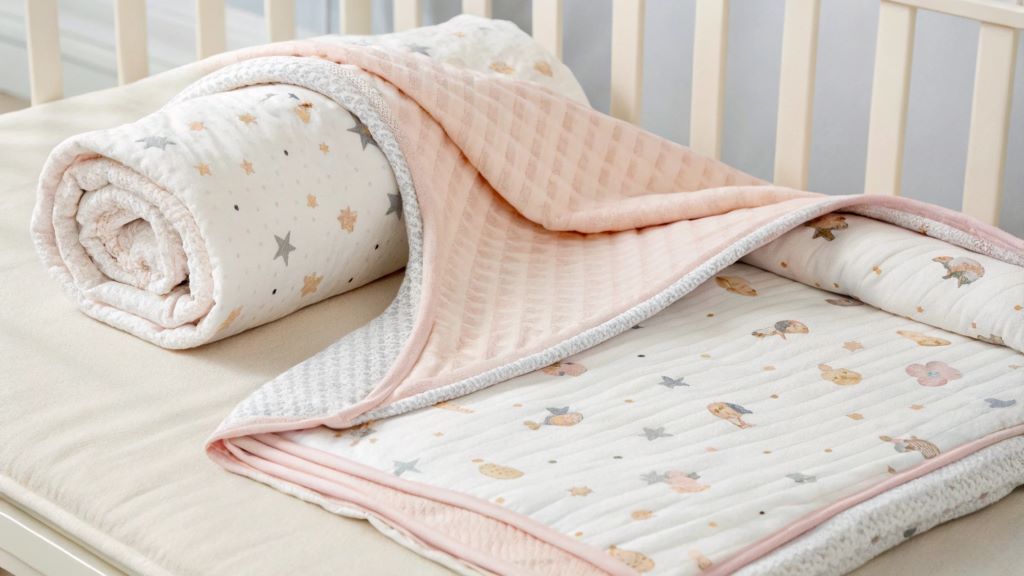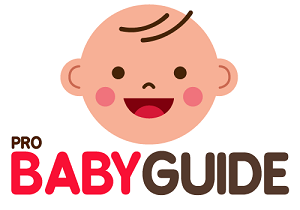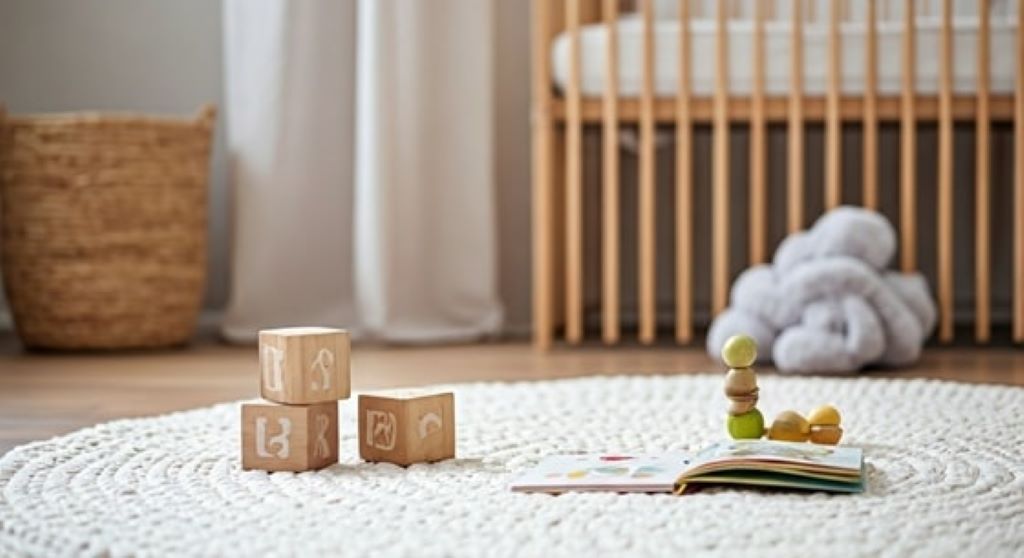Bringing a new baby home is an exciting, albeit overwhelming, experience. Among the myriad preparations, creating a safe and comfortable sleeping environment for your little one is paramount. While traditional bedding options abound, there’s a growing recognition of the superior benefits offered by organic cotton baby bedding sets, particularly those crafted with breathable fabrics. This article delves into why these sets are not just a luxury but a crucial investment in your baby’s health, safety, and overall well-being, exploring their unique advantages, what to look for when purchasing, and how to maintain them for lasting comfort.
Keystones of the Article
- Understanding the “Organic” Difference: Why is organic cotton superior for baby bedding?
- The Power of Breathability: How breathable fabrics contribute to infant safety and comfort.
- Health Benefits for Your Baby: Reducing exposure to chemicals and allergens.
- Safety First: Mitigating risks like overheating and SIDS.
- Environmental and Ethical Considerations: The broader impact of your choices.
- What to Look For: Key features and certifications to consider when buying.
- Care and Maintenance: Ensuring longevity and hygiene of organic bedding.
- Investing in Peace of Mind: The long-term value of organic, breathable bedding.
Understanding the “Organic” Difference
The term “organic” isn’t just a marketing buzzword; it signifies a rigorous process of cultivation and manufacturing that stands in stark contrast to conventional cotton production. Organic cotton is grown without the use of synthetic pesticides, herbicides, or genetically modified organisms (GMOs). This purity extends to the processing stage, where harmful chemicals like chlorine bleach, formaldehyde, and toxic dyes are avoided.
For baby bedding, this translates into a significant advantage. A baby’s skin is incredibly delicate and permeable, making them highly susceptible to absorbing chemicals from their environment. Conventional cotton can retain residues from the chemicals used in its production, which can then transfer to your baby’s skin, potentially causing irritation, allergies, or even contributing to more serious health issues over time. Organic cotton, free from these contaminants, offers a naturally soft, hypoallergenic, and non-toxic surface for your baby to sleep on, reducing the risk of skin rashes, eczema, and respiratory problems.
The Power of Breathability
Breathable fabrics are a non-negotiable feature for baby bedding. Babies have a less developed thermoregulation system compared to adults, making them more prone to overheating. Overheating is a significant risk factor for Sudden Infant Death Syndrome (SIDS). Breathable fabrics, such as those made from finely woven organic cotton, allow for optimal air circulation, helping to regulate your baby’s body temperature and prevent them from getting too hot.
Unlike synthetic materials that can trap heat and moisture, organic cotton’s natural fibers wick away sweat, keeping your baby dry and comfortable throughout the night. This not only enhances their sleep quality but also reduces the risk of skin irritation and the growth of bacteria and fungi that thrive in warm, moist environments. Look for terms like “muslin,” “percale,” or “sateen” when referring to organic cotton weaves, as these often indicate a higher degree of breathability.
Health Benefits for Your Baby
Beyond the avoidance of harmful chemicals, organic cotton baby bedding offers a range of direct health benefits:
- Reduced Allergen Exposure: Organic cotton is naturally hypoallergenic, making it an excellent choice for babies with sensitive skin, eczema, or allergies. The absence of harsh dyes and chemical finishes further minimizes the risk of allergic reactions.
- Superior Air Quality: By choosing organic bedding, you’re creating a sleeping environment free from volatile organic compounds (VOCs) and other airborne irritants that can off-gas from conventional bedding materials. This contributes to better indoor air quality in your baby’s nursery, promoting healthier respiratory function.
- Temperature Regulation: As discussed, the breathability of organic cotton helps prevent overheating, a critical factor in safe infant sleep. Consistent body temperature contributes to deeper, more restorative sleep for your baby.
- Enhanced Comfort: The natural softness and smooth texture of organic cotton are gentle against your baby’s delicate skin, promoting a sense of comfort and security that can aid in better sleep.
Safety First
The safety of your baby’s sleep environment is paramount, and organic cotton bedding plays a crucial role in mitigating several risks:
- SIDS Prevention: While many factors contribute to SIDS, overheating is a known risk factor. Breathable organic cotton helps regulate your baby’s temperature, reducing this risk. Always follow safe sleep guidelines, including placing your baby on their back to sleep, using a firm mattress, and keeping the crib free of loose blankets, bumpers, and toys.
- Chemical Exposure: The absence of toxic chemicals in organic cotton means you’re not exposing your baby to substances that could potentially be absorbed through their skin or inhaled. This reduces the burden on their developing systems and promotes long-term health.
- Reduced Fire Retardants: Many conventional bedding products are treated with chemical fire retardants, which have been linked to various health concerns. Organic cotton, by its nature, is often not treated with these chemicals, offering a safer alternative.
Environmental and Ethical Considerations
Your choice of organic cotton baby bedding extends beyond your immediate family, impacting the environment and global communities:
- Sustainable Farming Practices: Organic cotton farming promotes biodiversity, conserves water, and maintains soil health. It avoids the use of synthetic fertilizers and pesticides that can pollute water sources and harm ecosystems.
- Reduced Carbon Footprint: The production of organic cotton typically has a lower carbon footprint compared to conventional cotton, contributing to a more sustainable planet for future generations.
- Fair Labor Practices: Many organic textile companies adhere to fair trade principles, ensuring that workers involved in the production process are paid fairly, work in safe conditions, and are not subjected to exploitative labor practices. By choosing certified organic and fair trade products, you are supporting ethical supply chains.
What to Look For: Key Features and Certifications

When investing in organic cotton baby bedding sets with breathable fabrics, keep the following in mind:
Certifications are Crucial:
Look for recognized third-party certifications that guarantee the organic integrity of the product. The most prominent and reliable is the Global Organic Textile Standard (GOTS). GOTS certification ensures that the entire supply chain, from harvesting the raw materials to environmental and social responsibility, meets strict organic and ethical criteria. Other reputable certifications include Oeko-Tex Standard 100 (which tests for harmful substances but doesn’t certify organic origin) and USDA Organic.
Weave and Fabric Type:
- Muslin: Known for its exceptionally loose, breathable weave, perfect for warmer climates or babies who tend to overheat.
- Percale: A plain weave that creates a crisp, cool, and breathable fabric.
- Sateen: Offers a slightly smoother, more luxurious feel but can be slightly less breathable than percale or muslin.
- Jersey: A knit fabric that is soft and stretchy, offering comfort but may be slightly less breathable than woven options.
Thread Count:
While a high thread count is often associated with quality in adult bedding, for baby bedding and breathability, it’s not the sole indicator. A medium thread count (200-400 for percale) is often ideal for balancing softness with breathability. Excessively high thread counts can sometimes reduce breathability.
Dyeing Process:
Opt for natural, low-impact, or fiber-reactive dyes that are free from heavy metals and other harmful chemicals. GOTS certified products will ensure this.
Set Components:
Baby bedding sets typically include a fitted crib sheet and sometimes a crib skirt or a small, lightweight blanket (ensure any blanket is used only for supervised awake time, never for unsupervised sleep). Avoid sets that include bumpers, comforters, or excessive loose items, as these are not recommended for safe sleep.
Size and Fit:
Ensure the bedding set is specifically designed for your crib mattress size to ensure a snug and safe fit. Loose bedding can pose a suffocation hazard.
Care and Maintenance
Proper care extends the life of your organic cotton baby bedding and maintains its purity:
- Gentle Washing: Wash organic cotton bedding in cold water with a mild, eco-friendly detergent. Harsh chemicals in conventional detergents can strip the natural fibers and reduce their lifespan.
- Avoid Bleach and Fabric Softeners: Bleach can damage organic cotton fibers and introduce chemicals. Fabric softeners can leave a residue that reduces breathability and absorbency.
- Tumble Dry Low or Line Dry: High heat can shrink and damage cotton fibers. Tumble dry on a low setting or, ideally, line dry to preserve the fabric’s integrity and conserve energy.
- Separate from Conventional Laundry: To prevent transfer of chemical residues, wash organic bedding separately from non-organic items.
- Stain Treatment: For stains, use natural stain removers or a paste of baking soda and water before washing.
Investing in Peace of Mind
Choosing organic cotton baby bedding sets with breathable fabrics is more than just a purchase; it’s an investment in your baby’s health, safety, and future. It’s about providing a nurturing sleep environment free from harmful chemicals, promoting healthy temperature regulation, and contributing to a more sustainable world. While the initial cost may be slightly higher than conventional options, the long-term benefits for your baby’s well-being and your peace of mind are immeasurable. Prioritizing these features ensures your little one enjoys the healthiest, safest, and most comfortable sleep possible, allowing you to rest easier, too.
Conclusion
In the journey of parenthood, every decision feels significant, and creating a haven for your baby to rest is undoubtedly one of the most important. Organic cotton baby bedding sets with breathable fabrics stand out as a superior choice, offering unparalleled benefits for your child’s health, safety, and comfort. By understanding the advantages of organic materials, prioritizing breathability, and looking for trusted certifications, parents can confidently create a sleep environment that fosters healthy development and peaceful slumber. This thoughtful investment not only nurtures your precious little one but also supports a healthier planet, weaving a future where purity and well-being are paramount.
Read More: Baby Floor Seats at 3 Months
FAQs About Organic Cotton Baby Bedding Sets with Breathable Fabrics
Q1: Why is organic cotton better than conventional cotton for baby bedding?
A1: Organic cotton is grown without synthetic pesticides, herbicides, or GMOs, and processed without harsh chemicals like chlorine bleach or formaldehyde. This means it’s free from toxic residues that can irritate a baby’s delicate skin or be absorbed into their system. Conventional cotton, on the other hand, can retain these harmful chemicals.
Q2: How does “breathable fabric” specifically benefit my baby?
A2: Breathable fabrics, like those made from organic cotton, allow for optimal air circulation around your baby, helping to regulate their body temperature. This is crucial for preventing overheating, which is a risk factor for SIDS. Breathable fabrics also wick away moisture, keeping your baby dry and comfortable.
Q3: What certifications should I look for when buying organic baby bedding?
A3: The most important certification to look for is the Global Organic Textile Standard (GOTS). GOTS ensures that the product meets strict organic, environmental, and social criteria throughout the entire manufacturing process, from raw material to finished product. Oeko-Tex Standard 100 also certifies that products are free from harmful substances, but it doesn’t guarantee organic origin.
Q4: Can organic cotton bedding help with my baby’s eczema or sensitive skin?
A4: Yes. Organic cotton is naturally hypoallergenic and free from the harsh chemicals and dyes commonly found in conventional bedding that can trigger skin irritations, eczema flare-ups, and allergies. Its natural softness and purity are gentle on sensitive skin.
Q5: Is organic cotton baby bedding more expensive? Is it worth the cost?
A5: Organic cotton bedding can sometimes have a higher initial cost than conventional options due to the sustainable farming practices and rigorous processing standards. However, many parents find it to be a worthwhile investment due to the significant health and safety benefits for their baby, its durability, and its positive environmental impact.
Q6: Are all organic cotton bedding sets breathable?
A6: While organic cotton itself is a breathable fiber, the weave of the fabric also plays a role. Weaves like muslin, percale, and some sateens are particularly known for their breathability. Always check the product description for details on the fabric type and weave.
Q7: How should I wash and care for organic cotton baby bedding?
A7: Wash organic cotton bedding in cold water with a mild, eco-friendly detergent. Avoid using bleach, fabric softeners, and harsh stain removers. Tumble dry on a low setting or, ideally, line dry to preserve the fabric’s integrity and longevity. Washing separately from conventional items can also prevent chemical transfer.
Q8: What baby bedding items are considered safe for a crib?
A8: For safe sleep, a firm mattress and a fitted crib sheet are generally the only items recommended inside the crib. Avoid using bumpers, comforters, loose blankets, pillows, or excessive soft toys, as these can pose suffocation hazards or increase the risk of SIDS.
Q9: Does organic cotton bedding contain fire retardants?
A9: Generally, organic cotton products are not treated with chemical fire retardants, unlike many conventional bedding materials. If a product claims to be organic, it typically means it’s free from such chemical treatments. Always check for relevant certifications (like GOTS) if this is a concern.
Q10: How long will organic cotton baby bedding last compared to conventional bedding?
A10: With proper care, high-quality organic cotton bedding can be very durable and last through multiple washes and even multiple children. Its natural fibers are strong and resilient when treated gently, making it a sustainable choice in the long run.
Read More:




